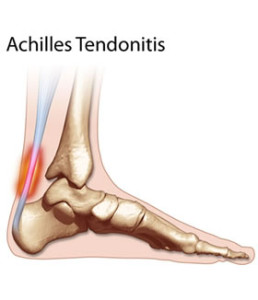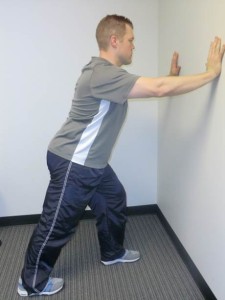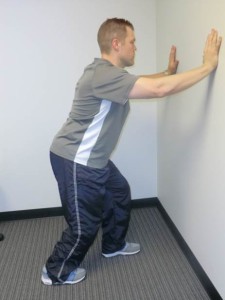Achilles Tendinitis
The physical therapists at SSOR see lots of poeple battling Achilles tendinitis. It’s important to note that Achilles tendinitis affects even people who are sedentary. Sure, athletes and “weekend warriors” get it, but so do people that walk a lot on a vacation. A competent physical therapist should be able to identify the cause and you should see results quickly. Fortunately, we can help you!
Causes of Achilles Tendinitis
There are numerous causes of Achilles tendinitis. Like most injuries, there are intrinsic causes that center around your body structure and there are extrinsic causes that center around training methodologies or training environments. Intrinsically, flat feet or high-arched feet can stress the Achilles. Previous injury history, like fractures of the lower extremity, can cause Achilles tendinitis from residual strength deficits. A history of ankle sprains has also been implicated as a cause of Achilles tendinitis because ankle sprains, when not treated properly, can lead to motion restrictions which don’t enable the Achilles to work properly. People that are excessively flexible or very tight can also be susceptible to Achilles tendinitis. Believe it or not, some powerful anti-biotics have been implicated in Achilles tendinitis because they are believed to kill tenocytes, which are tendon cells. You should talk to your doctor if you’ve been ill recently and were on an anti-biotic and then started having trouble after. These are just a few of the common intrinsic causes, but many more exist.
Extrinsic causes basically center around training errors. The biggest one is doing too much too soon and not properly progressing exercise, like running or training for races. Another extrinsic cause is the training surface. Concrete is not very forgiving. You should run on school tracks, trails, or blacktop to ease the shock on the Achilles. Yet another cause is doing too much hill running or running in sand. Basically, the Achilles is working overtime on these surfaces and can get irritated. Finally, the shoes you wear can contribute. Therefore, make sure you purchase supportive, comfortable shoes, not because of the logo on the shoe.
Symptoms of Achilles Tendinitis
The first thing that needs to be done is to diagnose it accurately – it could be tendinitis or tendinosis. Dull, poorly localized, achy pain that is more chronic is likely a tendinosis. Truthfully, it’s better to use the term “tendinopathy” when talking about this injury because if it’s treated as an “itis” when it’s as “osis,” the outcomes can change. Tendinosis is a more degenerative, non-inflammatory condition and should be treated a little differently than a tendinitis. Tendinitis is sharp, localized pain that is usually of recent onset. Tendinitis is an inflammatory condition while tendinosis is not. Anti-inflammatory medications like Ibuprofen won’t help a tendinosis at all, nor will ice very much. However, ice and anti-inflammatories can help reduce pain with tendinitis. Typically, pain surfaces either during or after activity and usually resolves with rest. Pain may be where the Achilles attaches on the heel or in the Achilles itself. It will hurt to go up and down stairs as well as during the activity that likely caused it. People with Achilles troubles tend to hurt more in the morning, feel better as the day progresses, then hurt at the end of the day. You may also have a limp when you walk as well.
Treatment for Achilles tendinitis
There are several things you can do to treat Achilles tendinitis. Ensuring you have properly fitting shoes and if necessary, orthotics is a good start. A slight heel lift in your shoe can reduce strain on the Achilles as well and is a cost effective intervention. Basically, put this in the shoe of the involved leg and see if that helps when you do your activity. Stretching exercises for the calves is very important and you should stretch both your gastrocnemius and the soleus. Stretches should be held for 30 seconds. See figures 1 and 2 for these stretches. Eccentric exercises to strengthen the Achilles can literally work magic on your Achilles. That said, there is a very specific way they should be done and you should see a physical therapist to learn how. Finally, similar to any lower extremity injury, gluteal strengthening is imperative because strong glutes stabilize the pelvis and everything attaches to the pelvis. Those big muscles in your hips act as shock absorbers so that skinny Achilles doesn’t have to work so hard. It may not make a lot of sense, but trust us, gluteal strengthening is an integral part of rehabilitation for Achilles tendinitis.
Achilles tendinitis can not only affect recreational activities, but can also limit you ability to walk at work, take the stairs, or even tolerate getting out of the car after being in it a while. The physical therapists at SSOR see it is a privilege to help partner with you in your care. Give us a call, we’ll get you results quickly. We have locations in Overland Park and Prairie Village to serve you. Remember, you don’t need a referral from a physician to see a PT in Kansas anymore!



